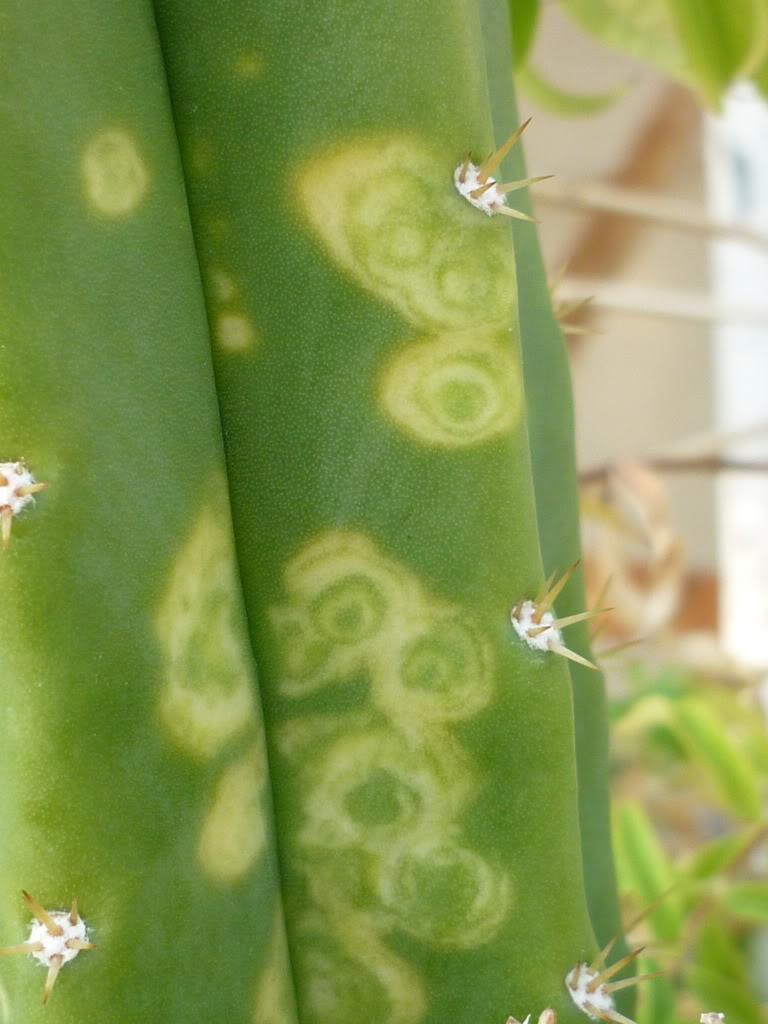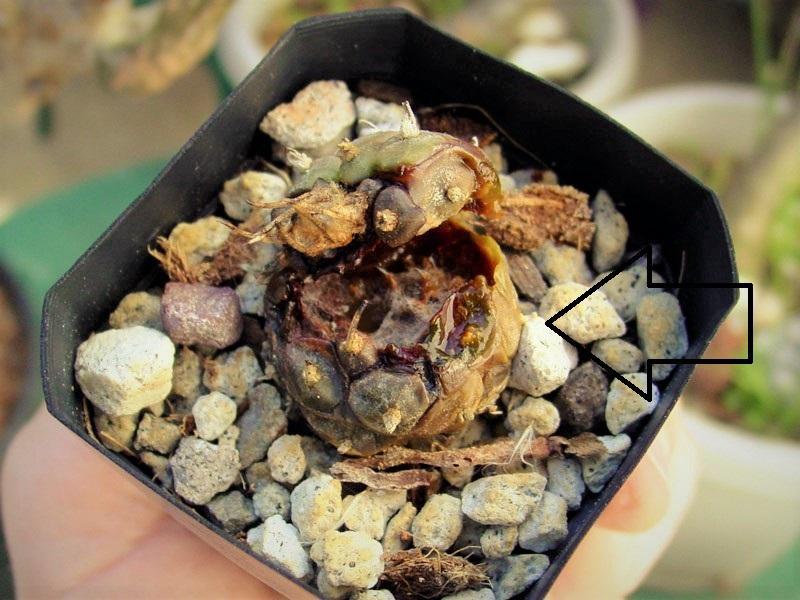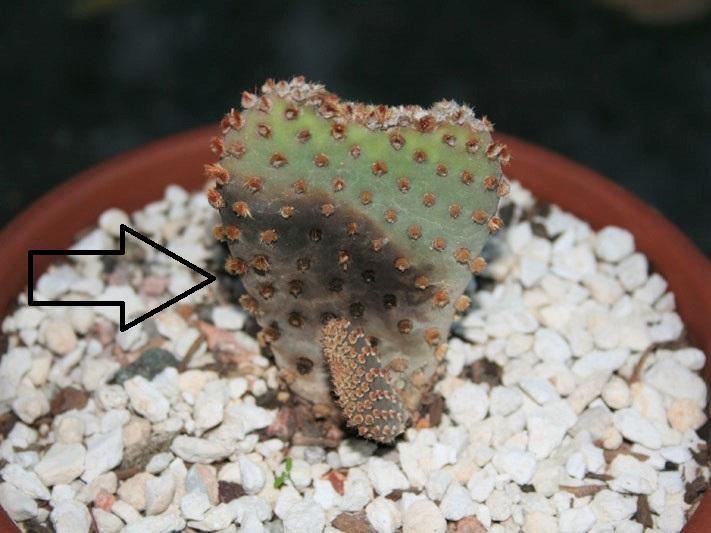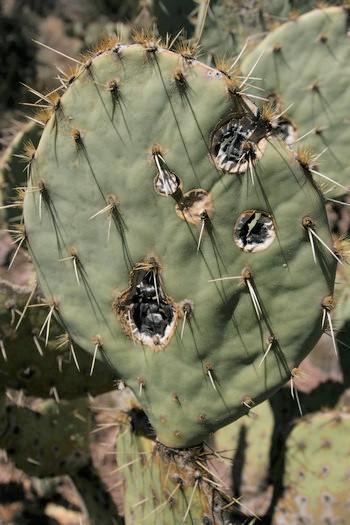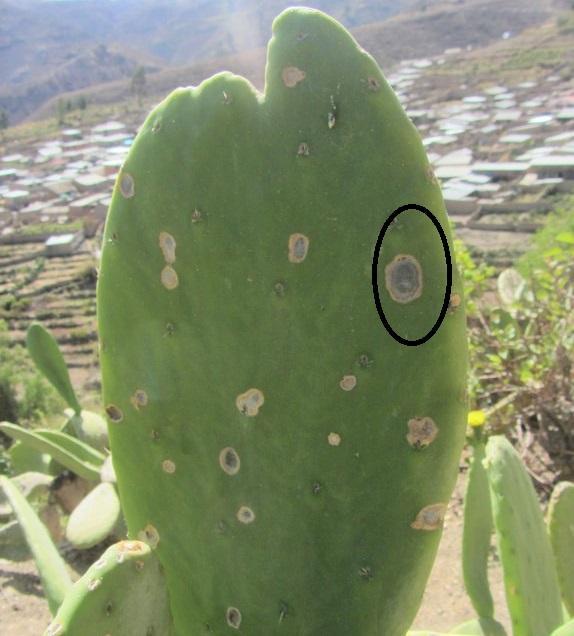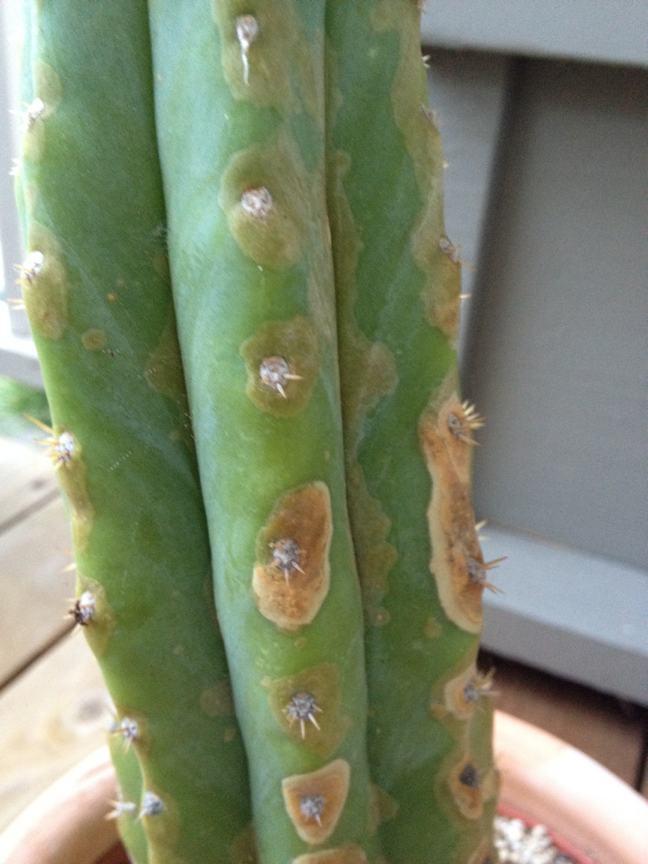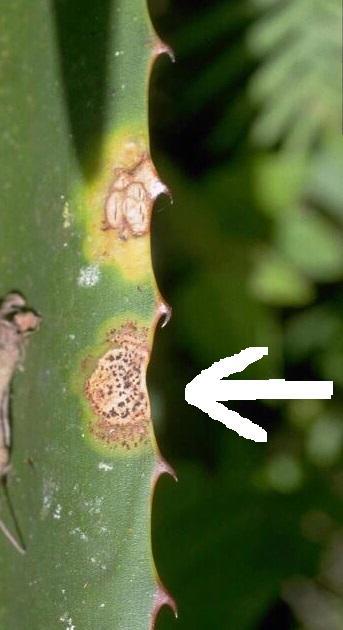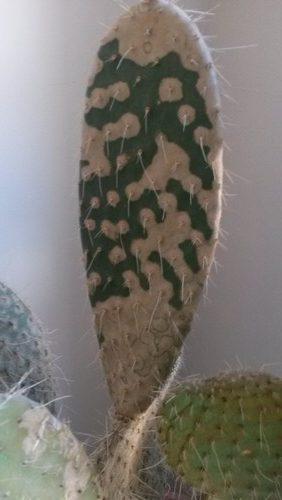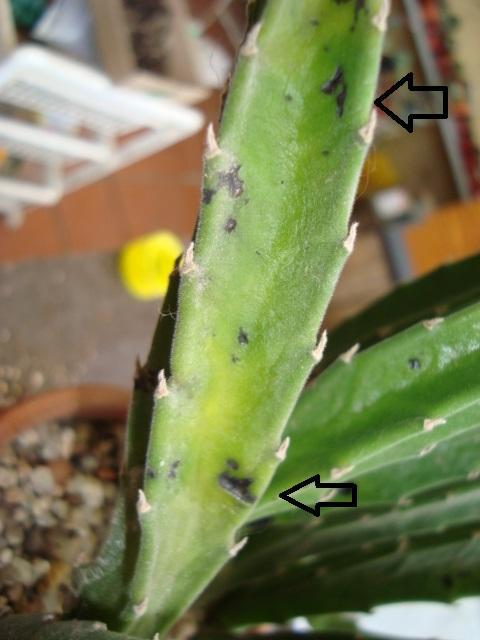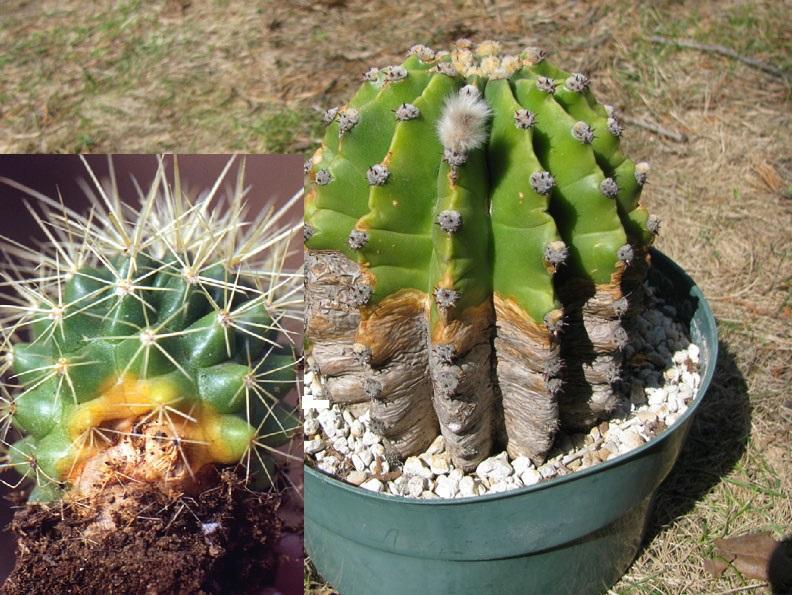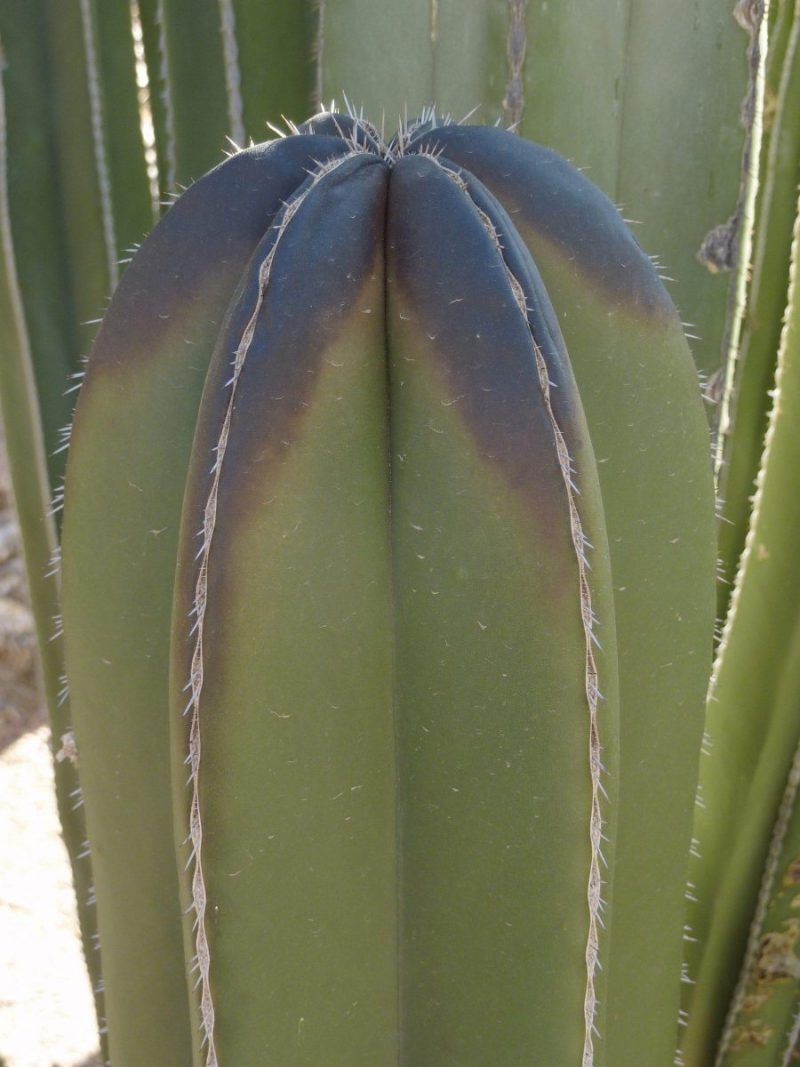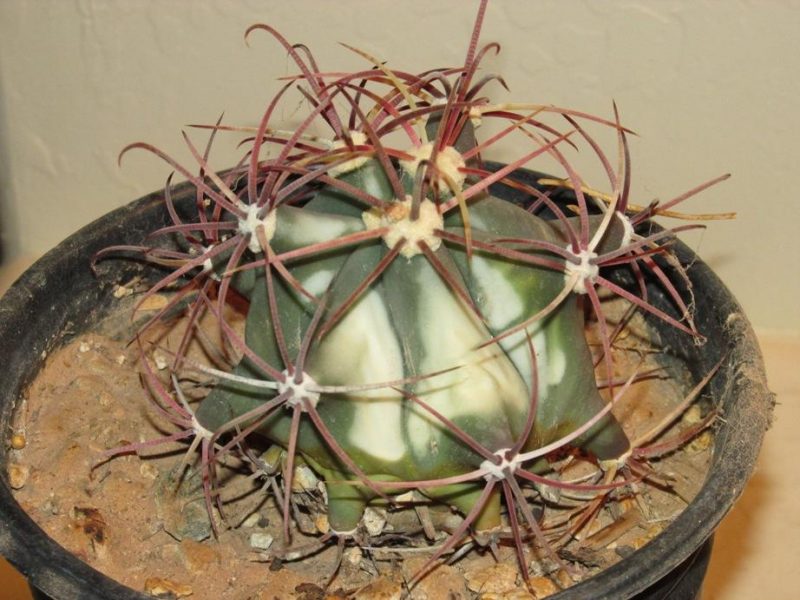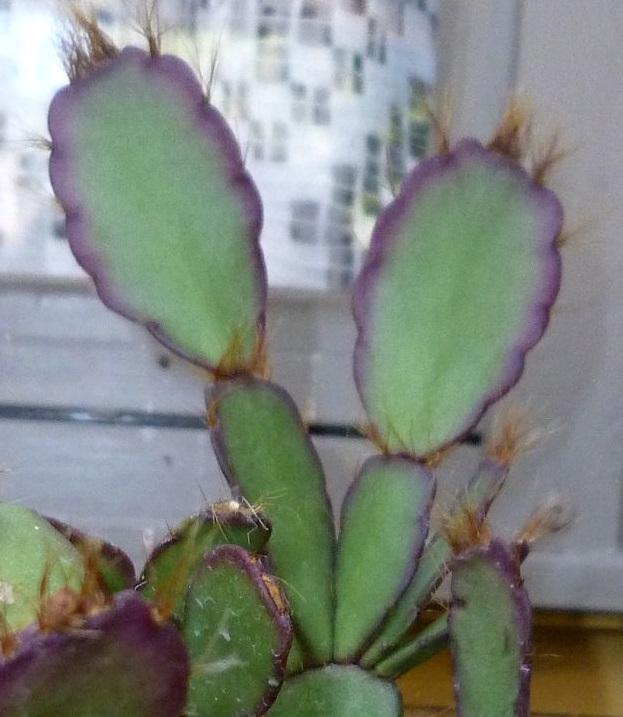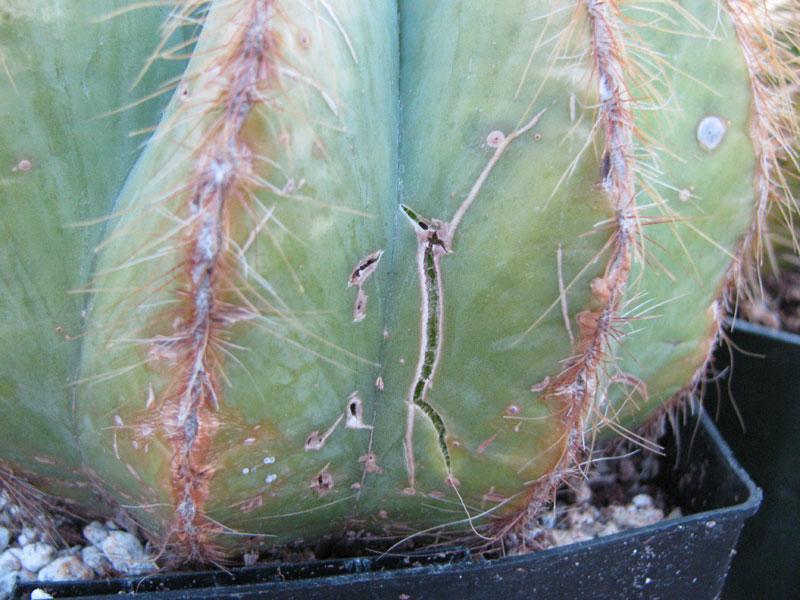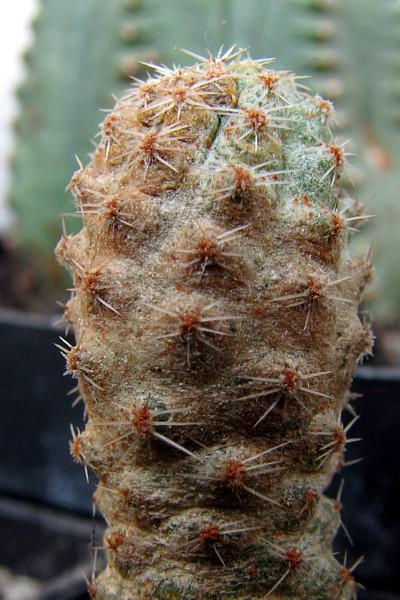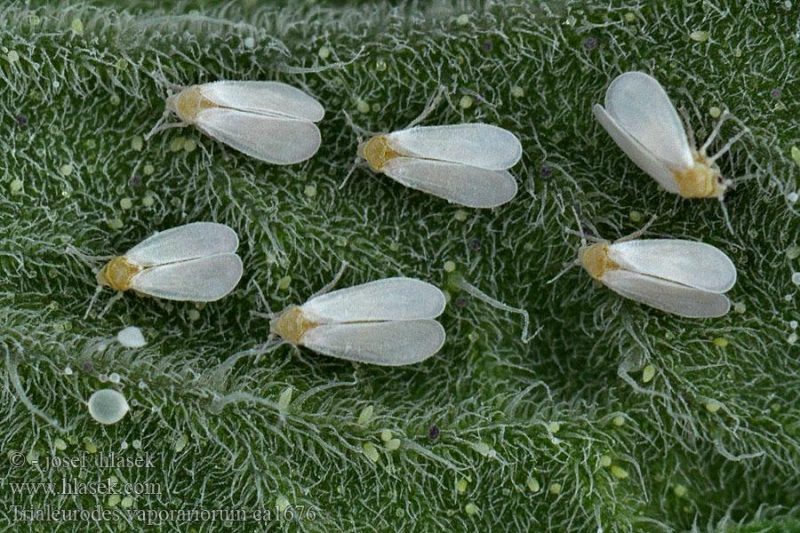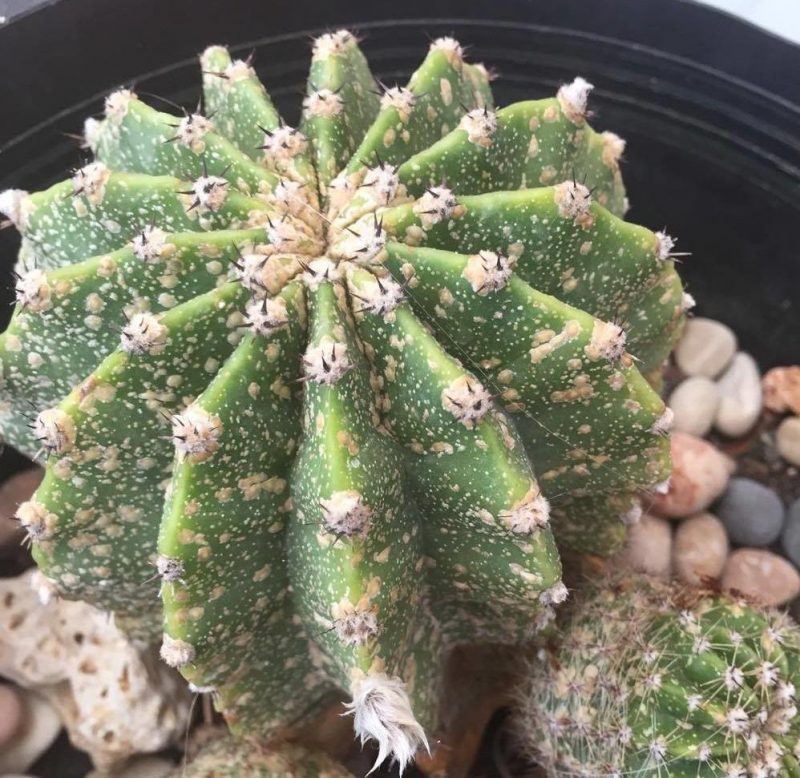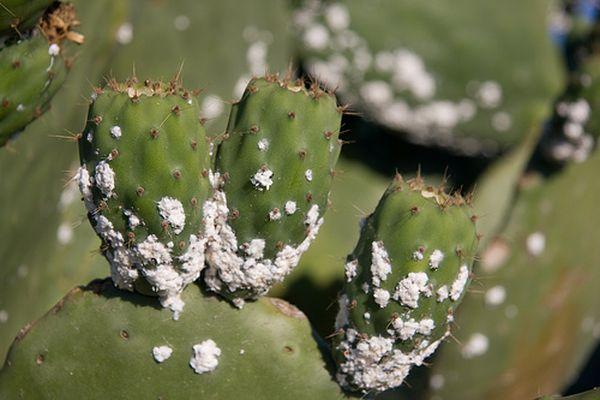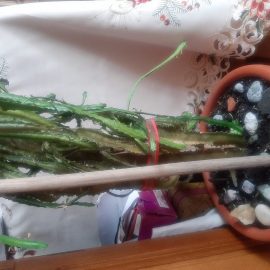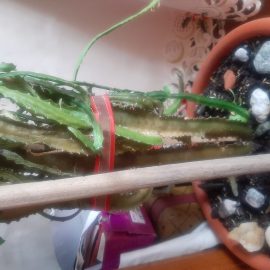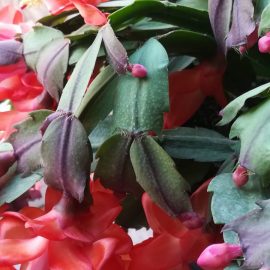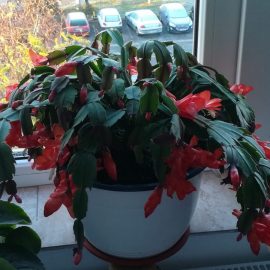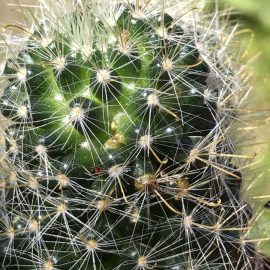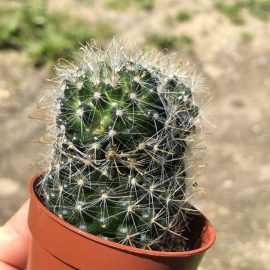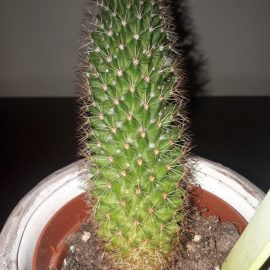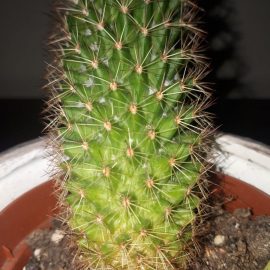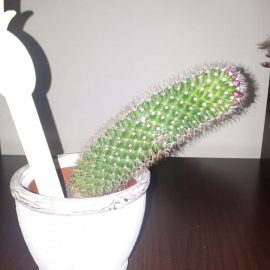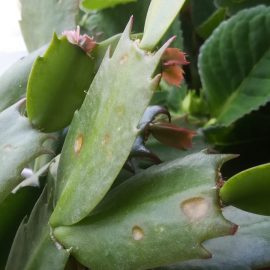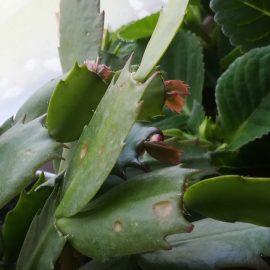Cactus, pest and disease control
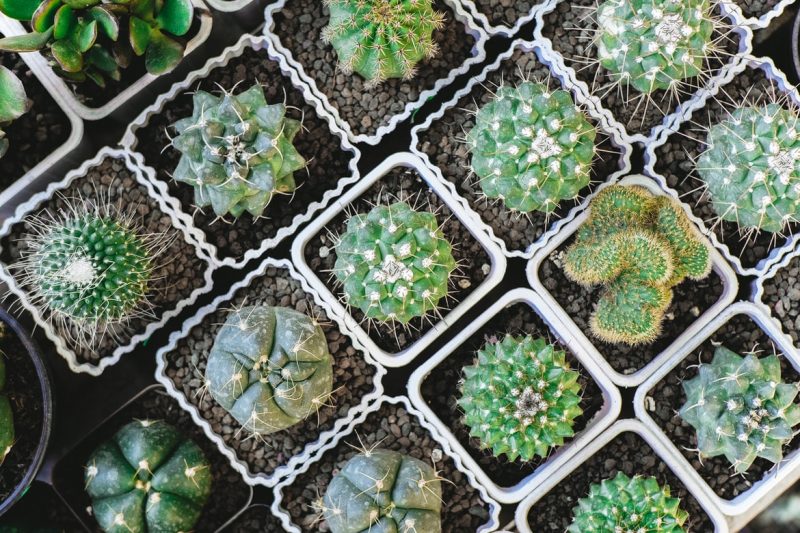
Cacti are succulent plants, which are well adapted to prolonged drought. They are grouped in the Cactaceae family and most species are native to America. The leaves of these plants have turned into thorns to reduce water evaporation and to protect themselves from animals. Cacti carry out the process of photosynthesis through their thickened stems, in which they store large amounts of water. All species of cacti produce flowers and seeds. Most species bloom during the night and are pollinated by butterflies or bats.
Due to their various shapes and colors, cacti have become some of the most beloved houseplants. Growing cacti involves the knowledge of some cultural measures related to this type of ornamental plant. Cactus growth and development processes can be influenced by several factors. Examples: temperature, light, humidity, disease, or pests. Knowing these factors is an important aspect of the process of taking care of succulents.
The main diseases of cacti are:
Viruses: The mosaic of cacti. This virus manifests through the appearance of diffuse yellow spots on the plant. The spots alternate with the healthy tissue of the plant, thus forming a mosaic. The plants become deformed due to the uneven growth of the attacked tissue. The disease evolves, and the spots merge leading to large portions with the aspect of a mosaic. In severe cases, the mosaic turns brown, the tissue dies, and the plant no longer produces flowers. The virus is transmitted from one plant to another through aphids or humans (while performing maintenance work). The development of the disease is favored by high humidity, low temperatures, and low light.
Methods of prevention and control:
- aphid control;
- the use of healthy vegetative material for propagation (grafting, pruning);
- the disinfection of tools with rubbing alcohol or formalin;
- the infested plants should be separated from the healthy ones, and if in a few days they do not recover, they must be burned;
Bacteriosis: black cactus rot caused by a bacterium called Erwinia. Brown spots of different sizes initially appear on the stem. The disease then progresses and the brown tissue softens. If no action is taken, the tissue turns into a foul-smelling viscous liquid.
Methods of prevention and control:
- when the disease is in the initial stage, the attacked areas must be removed and copper-based products should be applied.
- if the disease is in an advanced stage, the attacked tissue is removed together with a relatively big part of the healthy tissue in order to eliminate the risk of the disease penetrating the fluid-conducting tissue;
- in case of severe infestation, the attacked plants must be burned;
Recommended products
-
You can find products on a different store
Change Store -
You can find products on a different store
Change Store -
You can find products on a different store
Change Store -
You can find products on a different store
Change Store -
You can find products on a different store
Change Store -
You can find products on a different store
Change Store -
You can find products on a different store
Change Store -
You can find products on a different store
Change Store -
You can find products on a different store
Change Store -
You can find products on a different store
Change Store -
You can find products on a different store
Change Store -
You can find products on a different store
Change Store -
You can find products on a different store
Change Store -
You can find products on a different store
Change Store -
You can find products on a different store
Change Store -
You can find products on a different store
Change Store -
You can find products on a different store
Change Store -
You can find products on a different store
Change Store -
You can find products on a different store
Change Store -
You can find products on a different store
Change Store -
You can find products on a different store
Change Store -
You can find products on a different store
Change Store -
You can find products on a different store
Change Store -
You can find products on a different store
Change Store
Mycosis: A disease caused by Phytophthora, a genus of plant-damaging oomycetes. The symptoms of this disease are represented by the appearance of wet brown spots. Near these spots, the tissue hollows, and rots. The disease evolves rapidly, and if no treatments are applied, the whole plant rots and becomes covered in a whitish fuzz. The disease is more likely to appear in conditions of high humidity and temperature. In addition to these symptoms, the oomycetes can attack the base of the plant. As a result, brown spots appear at the base of the plant. The disease evolves rapidly and the whole plant is destroyed.
Methods of prevention and control:
- avoid excessive watering;
- ventilate well the spaces where cacti are grown;
- expose the plants to sunlight;
- remove the attacked tissues and apply fungicides that are specific to fighting this type of disease to disinfect the area.
Recommended products
-
You can find products on a different store
Change Store -
You can find products on a different store
Change Store -
You can find products on a different store
Change Store -
You can find products on a different store
Change Store -
You can find products on a different store
Change Store -
You can find products on a different store
Change Store -
You can find products on a different store
Change Store -
You can find products on a different store
Change Store -
You can find products on a different store
Change Store -
You can find products on a different store
Change Store -
You can find products on a different store
Change Store -
You can find products on a different store
Change Store -
You can find products on a different store
Change Store -
You can find products on a different store
Change Store -
You can find products on a different store
Change Store -
You can find products on a different store
Change Store -
You can find products on a different store
Change Store -
You can find products on a different store
Change Store -
You can find products on a different store
Change Store -
You can find products on a different store
Change Store -
You can find products on a different store
Change Store -
You can find products on a different store
Change Store -
You can find products on a different store
Change Store -
You can find products on a different store
Change Store
Phyllosticta pad spot fungal disease caused by the fungus Phyllosticta opinticola. The symptoms of this disease are characterized by the appearance of gray spots of various shapes. The disease then progresses, and the spots darken in color until they eventually turn black. Next to these spots appear circular dots, which represent the growth of the fungus. The disease is more likely to appear in conditions of high humidity and temperature.
Methods of prevention and control:
- severely affected plants must be destroyed;
- maintain a constant temperature;
- ventilate the space used for cactus cultivation;
- apply fungicide treatments.
Phoma blight produced by the fungus Phoma cereicola. The disease manifests through the appearance of spots of different shapes. The spots are prominent and yellow-brown-blackish. They can be isolated or they can take up large portions of the plant. On the surface of the spots, there are black punctiform formations, which represent the growth of the fungus. The fungus is transmitted through seeds.
Methods of prevention and control:
- severely affected plants must be destroyed;
- the seeds should be sprayed preventively with a 1% solution of Bordeaux mixture;
The disease of yellow-whitish spots caused by the fungus Phomopsis cacti. The attack of the fungus is characterized by the appearance of spots of different shapes on the stems of the cacti. Also, the attacked tissue is hollowed and it has a yellowish or whitish color. Most of the time the epidermis in the affected areas is split. Near the spots, brown-black circular formations are formed, which represent the growth of the fungus. The fungus is transmitted through seeds.
Methods of prevention and control:
- severely affected plants must be removed from the crop;
- the seeds should be sprayed preventively with a 1% solution of Bordeaux mixture;
Recommended products
-
You can find products on a different store
Change Store -
You can find products on a different store
Change Store -
You can find products on a different store
Change Store -
You can find products on a different store
Change Store -
You can find products on a different store
Change Store -
You can find products on a different store
Change Store -
You can find products on a different store
Change Store -
You can find products on a different store
Change Store -
You can find products on a different store
Change Store -
You can find products on a different store
Change Store -
You can find products on a different store
Change Store -
You can find products on a different store
Change Store -
You can find products on a different store
Change Store -
You can find products on a different store
Change Store -
You can find products on a different store
Change Store -
You can find products on a different store
Change Store -
You can find products on a different store
Change Store -
You can find products on a different store
Change Store -
You can find products on a different store
Change Store -
You can find products on a different store
Change Store -
You can find products on a different store
Change Store -
You can find products on a different store
Change Store -
You can find products on a different store
Change Store -
You can find products on a different store
Change Store
Stem staining caused by the fungus Coniothyrium opuntiae. The symptoms of this mycosis are represented by the appearance of large, circular, yellow spots. Near the spots, punctiform formations arranged in concentric circles are formed, which represent the growth of the fungus. The disease affects plants which have been weakened by various environmental factors.
Methods of prevention and control:
- apply fungicide treatments.
The disease of brown-gray spots is caused by the fungus Diplodia opuntiae. It manifests through the appearance of circular or oval brown-gray spots. The disease then evolves, and the spots merge and cover large portions of the stem. The attacked tissue dries out and turns white. The epidermis in the affected areas shrivel up and exfoliate. On the surface of the attacked areas appear small, circular formations of black color that represent the growth of the fungus.
Methods of prevention and control:
- the severely attacked plants must be destroyed;
- if the disease is in an initial phase, fungicide treatments should be applied.
Cactus Anthracnose is produced by fungi of the genus Gloeosporium. Blackish, circular, or irregular spots appear on the cactus stems. The disease then evolves, and the spots become larger and eventually merge, while on their surface appear small prominences that represent the growth of the fungus. The attacked tissue dries out and the plants no longer grow normally. In addition to the damage caused directly, Anthracnose favors the appearance of fungi of the genus Alternaria which worsens the destruction of the plant’s tissue.
Methods of prevention and control:
- the plants should be handled carefully in order to avoid injury;
- severely infected plants must be burned;
- watering should be done carefully;
- if the disease is in its early stages, fungicide treatments should be applied.
Fusarium Rot caused by fungi of the genus Fusarium. The attack begins at the base of the plant and gradually spreads to all aerial parts. The disease evolves, the plant turns gray, the stem shrivels up, and then rots. The disease attacks the fluid-conducting tissue, blocking the sap circulation in the plant. Thus, the supply of water and mineral elements is defective and the plants become weakened.
Methods of prevention and control:
- use healthy vegetative material for propagation (cuttings);
- disinfect the pots and tools;
- water the plant rationally;
- ventilate the spaces where the plants are placed;
Cacti may also have symptoms that are similar to those caused by pathogens, but in reality, they are mainly caused by physical factors. These factors decisively influence the growth and development of the cacti.
The most common non-infectious diseases are:
The effects of low temperatures: Cacti are heat-loving plants and for this reason they cannot withstand low temperatures. Some cactus species can withstand light frosts, but only if temperatures drop gradually. In this case, plants have time to adapt their metabolism, and, as a result, can withstand negative temperatures. It the plant freezes, it can turn into a viscous mass.
Sunburn: plants in the Cactaceae family are resistant to strong sunburn and are affected by sunburn only if they have been kept for a long time in shady places. For this reason, plants that have been kept in shady places have to be gradually exposed to direct sunlight. Plants can recover from weak sunburn if they are immediately moved to shady areas. If the cacti have been severely affected by sunburn, this means that the epidermis is destroyed. To save these plants, it is recommended to cut the affected areas.
Nutrient deficiencies: balanced fertilization is an important factor in the cultivation and care of cacti. In this sense, the fertilizers applied must contain both macroelements and trace elements. For example: if only nitrogen-based fertilizers are applied, the plant will develop much more, but the resistance to diseases and pests decreases.
Recommended products
-
You can find products on a different store
Change Store -
You can find products on a different store
Change Store -
You can find products on a different store
Change Store -
You can find products on a different store
Change Store -
You can find products on a different store
Change Store -
You can find products on a different store
Change Store -
You can find products on a different store
Change Store -
You can find products on a different store
Change Store -
You can find products on a different store
Change Store -
You can find products on a different store
Change Store -
You can find products on a different store
Change Store -
You can find products on a different store
Change Store -
You can find products on a different store
Change Store -
You can find products on a different store
Change Store -
You can find products on a different store
Change Store -
You can find products on a different store
Change Store -
You can find products on a different store
Change Store -
You can find products on a different store
Change Store -
You can find products on a different store
Change Store -
You can find products on a different store
Change Store -
You can find products on a different store
Change Store -
You can find products on a different store
Change Store -
You can find products on a different store
Change Store -
You can find products on a different store
Change Store
Excessive watering: in the areas where they are native, the cacti manage to survive without precipitation for long periods of time. Excessive watering can cause softening and rot of the plants. This phenomenon is also called physiological rotting. Also, spraying the plants when they have open wounds is forbidden. After some portions of the plant have been removed, the resulting wounds need time to heal. If water is applied to the wounds at that time, they will have difficulty healing or may even rot.
The main pests of cacti are:
Pathogenic nematode affecting cacti (Heterodera Cacti). It overwinters in egg form on the surface layer of the soil. In spring, the eggs hatch and the larvae move through the soil and fix themselves on the roots of the cacti. The larvae feed by stinging the roots of cacti, causing disturbances in their physiological processes. Also, because of the wounds produced by these insects, phytopathogenic fungi can infest the plants.
Control methods:
- only healthy plants must be planted;
The common red spider mite (Tetranychus urticae). It overwinters in the bark’s cracks in the stage of fertilized female, under plant debris at the surface of the soil. In heated spaces, it carries out its natural biological cycle, uninterrupted. Females form a specific web that surrounds the stem and then begin to lay eggs. The larvae and adults sting and suck the sap of the infested plants. Following the attack, the development of the plant is slowed down. This insect can also transmit a number of diseases.
Control methods:
- chemical treatments with specific products;
Recommended products
-
You can find products on a different store
Change Store -
You can find products on a different store
Change Store -
You can find products on a different store
Change Store -
You can find products on a different store
Change Store -
You can find products on a different store
Change Store -
You can find products on a different store
Change Store -
You can find products on a different store
Change Store -
You can find products on a different store
Change Store -
You can find products on a different store
Change Store -
You can find products on a different store
Change Store -
You can find products on a different store
Change Store -
You can find products on a different store
Change Store -
You can find products on a different store
Change Store -
You can find products on a different store
Change Store -
You can find products on a different store
Change Store -
You can find products on a different store
Change Store -
You can find products on a different store
Change Store -
You can find products on a different store
Change Store -
You can find products on a different store
Change Store -
You can find products on a different store
Change Store -
You can find products on a different store
Change Store -
You can find products on a different store
Change Store -
You can find products on a different store
Change Store -
You can find products on a different store
Change Store
Greenhouse whitefly (Trialeurodes vaporariorum). Adults have their bodies covered with a white waxy substance and have a dusty appearance. This pest causes significant damage to protected areas. Adults and larvae feed on the sap of plants causing disorders of the physiological processes of the plant. In case of severe infestation, the plants might dry completely.
Control methods:
- chemical treatments with specific insecticides;
Recommended products
-
You can find products on a different store
Change Store -
You can find products on a different store
Change Store -
You can find products on a different store
Change Store -
You can find products on a different store
Change Store -
You can find products on a different store
Change Store -
You can find products on a different store
Change Store -
You can find products on a different store
Change Store -
You can find products on a different store
Change Store -
You can find products on a different store
Change Store -
You can find products on a different store
Change Store -
You can find products on a different store
Change Store -
You can find products on a different store
Change Store -
You can find products on a different store
Change Store -
You can find products on a different store
Change Store -
You can find products on a different store
Change Store -
You can find products on a different store
Change Store -
You can find products on a different store
Change Store -
You can find products on a different store
Change Store -
You can find products on a different store
Change Store -
You can find products on a different store
Change Store -
You can find products on a different store
Change Store -
You can find products on a different store
Change Store -
You can find products on a different store
Change Store -
You can find products on a different store
Change Store
Scale insects (Diaspis echinocacti). It is the main pest that attacks plants grown both outdoors and in protected areas. Adults and larvae colonize the aerial parts of the plant. They feed on sap, and after the infestation cacti no longer grow normally and dry out.
Control methods:
- chemical treatments with specific insecticides;
Recommended products
-
You can find products on a different store
Change Store -
You can find products on a different store
Change Store -
You can find products on a different store
Change Store -
You can find products on a different store
Change Store -
You can find products on a different store
Change Store -
You can find products on a different store
Change Store -
You can find products on a different store
Change Store -
You can find products on a different store
Change Store -
You can find products on a different store
Change Store -
You can find products on a different store
Change Store -
You can find products on a different store
Change Store -
You can find products on a different store
Change Store -
You can find products on a different store
Change Store -
You can find products on a different store
Change Store -
You can find products on a different store
Change Store -
You can find products on a different store
Change Store -
You can find products on a different store
Change Store -
You can find products on a different store
Change Store -
You can find products on a different store
Change Store -
You can find products on a different store
Change Store -
You can find products on a different store
Change Store -
You can find products on a different store
Change Store -
You can find products on a different store
Change Store -
You can find products on a different store
Change Store
Wooly apple aphid (Eriosoma lanigerum). They have several generations per year and colonize the aerial parts of the cacti. Adults and larvae feed on the sap of the plants. Following the attack, the cactus’ tissue atrophies and eventually drys out.
Control methods:
- chemical treatments with specific insecticides;
Recommended products
-
You can find products on a different store
Change Store -
You can find products on a different store
Change Store -
You can find products on a different store
Change Store -
You can find products on a different store
Change Store -
You can find products on a different store
Change Store -
You can find products on a different store
Change Store -
You can find products on a different store
Change Store -
You can find products on a different store
Change Store -
You can find products on a different store
Change Store -
You can find products on a different store
Change Store -
You can find products on a different store
Change Store -
You can find products on a different store
Change Store -
You can find products on a different store
Change Store -
You can find products on a different store
Change Store -
You can find products on a different store
Change Store -
You can find products on a different store
Change Store -
You can find products on a different store
Change Store -
You can find products on a different store
Change Store -
You can find products on a different store
Change Store -
You can find products on a different store
Change Store -
You can find products on a different store
Change Store -
You can find products on a different store
Change Store -
You can find products on a different store
Change Store -
You can find products on a different store
Change Store














































































































































































































































































































































































































































